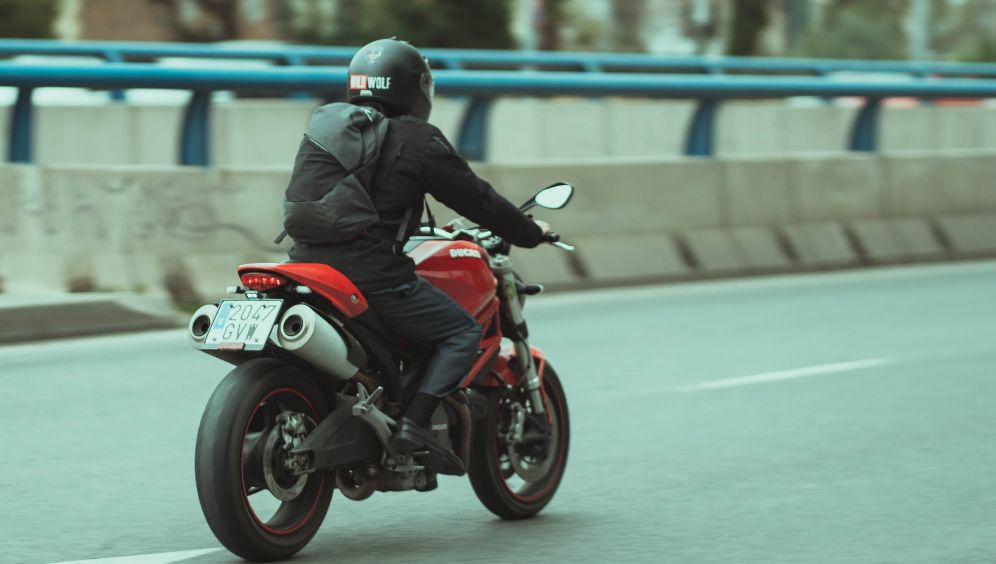Free Consultations
Is Lane Splitting Legal in California? 2024

The Golden State is known for its sunny beaches, iconic Hollywood sign, and traffic. However, California has some of the busiest roads in the country. This means that motorcyclists often look for ways to navigate the congestion more efficiently. One such method is lane splitting, which has sparked much debate.
The Lane Splitting Phenomenon
Lane splitting, also known as white lining or stripe riding, is the act of a motorcyclist riding between lanes of stopped or slow-moving traffic. It is a practice that has long been a point of contention among drivers, motorcyclists, and lawmakers alike. Some argue that it can help alleviate traffic congestion and improve safety for motorcyclists. However, others claim that it poses a significant risk to riders and motorists.
The Golden State’s Trailblazing Stance
California has always been forward-thinking regarding lane splitting. In 2016, the state became the first in the U.S. to legalize the practice. Since then, California has remained the only state where lane splitting is explicitly allowed. Other states either prohibit the practice outright or leave it legally ambiguous.
Assembly Bill 51 – The Foundation of Legal Lane Splitting
To understand the current status of lane splitting in California, it is essential to examine Assembly Bill 51 closely. This bill, signed into law on August 19, 2016, made California the pioneer state to legalize lane splitting. However, it is crucial to note that the bill did not provide specific guidelines for the practice. Instead, it authorized the California Highway Patrol (CHP) to develop educational guidelines for lane splitting. The goal was to educate motorcyclists and motorists on the practice.
The Debate – Pros and Cons of Lane Splitting
As with any controversial topic, there are arguments for and against lane splitting. Here are some of the most common points on both sides of the debate:
Pros:
- Reduced Congestion: Allowing motorcyclists to split lanes can help alleviate traffic congestion. It enables them to move more freely through stalled or slow-moving traffic.
- Safety for Motorcyclists: Some studies suggest that lane splitting can reduce the risk of rear-end collisions for motorcyclists. They can avoid being trapped between cars during traffic jams.
- Environmental Benefits: Lane splitting may reduce fuel consumption and emissions. It allows motorcycles to spend less time idling in traffic.
Cons:
- Increased Risk for Accidents: Critics argue that lane splitting can lead to more accidents. Drivers may not expect or notice motorcyclists navigating between lanes.
- Difficulty for Emergency Vehicles: Lane splitting could make it harder for emergency vehicles to navigate through traffic, especially if motorcyclists are not vigilant and fail to yield.
- Distraction for Other Drivers: The sudden appearance of a motorcycle between lanes can startle and distract drivers. This can potentially lead to dangerous situations on the road.
Tips for Safe Lane Splitting
Lane splitting can be a useful technique for motorcyclists in California. Nevertheless, it is essential to prioritize safety when navigating between lanes. Here are some tips to help ensure a safer lane splitting experience:
- Be Visible: Increase your visibility by wearing brightly colored or reflective clothing. Use your motorcycle’s headlights, even during the day. Position yourself in the lane where other drivers can easily see you.
- Stay Alert: Always be aware of your surroundings and anticipate potential hazards. Watch for sudden lane changes, opening car doors, or debris on the road. Be prepared to react quickly and adjust your riding accordingly.
- Choose Your Lanes Wisely: When lane splitting, opt for the most space between vehicles. Avoid splitting near large vehicles like trucks and buses. Additionally, splitting between the far-left lanes is generally safer, as drivers are more likely to expect motorcyclists there.
- Monitor Road Conditions: Be mindful of changing road conditions, such as wet pavement, potholes, or uneven surfaces. Adjust your lane splitting practices to accommodate for these factors and ensure your safety.
- Know Your Limits: Understand your riding abilities and the capabilities of your motorcycle. Do not attempt to lane split if you are uncomfortable with the maneuver. If your motorcycle is not suitable for navigating tight spaces, it may be safer to avoid splitting lanes.
FAQs About Lane Splitting in California
How many US states allow lane splitting?
As of 2023, California is the only state in the United States that explicitly allows lane splitting. The practice is either prohibited or not clearly addressed in the other 49 states. In some states, motorcyclists who engage in lane splitting may also risk being cited for other traffic violations, such as reckless driving or improper passing.
Why does California let motorcycles legally split lanes while 49 other states do not?
California legalized lane splitting in 2016 with the passage of Assembly Bill 51. It was primarily intended to address traffic congestion issues and improve safety for motorcyclists. The state recognized that lane splitting could potentially reduce rear-end collisions for motorcyclists and help alleviate traffic jams. However, the practice remains controversial, and other states have yet to adopt similar legislation.
How fast can you lane split in California?
While there is no specific speed limit for lane splitting in California, the California Highway Patrol (CHP) guidelines advise motorcyclists to avoid lane splitting at speeds exceeding 50 mph. Additionally, the guidelines recommend that motorcyclists do not go more than 15 mph faster than surrounding traffic when lane splitting. These guidelines are not legally enforceable but serve as a safety framework for motorcyclists.
Where can you lane split in California?
In California, lane splitting is permitted on all public roads where motorcycles are allowed. However, motorcyclists should exercise caution and follow the CHP guidelines for safe lane splitting. These guidelines suggest avoiding lane splitting near large vehicles, such as buses and big rigs. It also recommends being mindful of road conditions and potential hazards. It is crucial for motorcyclists to always prioritize safety when deciding whether to engage in lane splitting.
Contact the Law Offices of Carl D. Barnes Today
If you have been injured in a motorcycle accident, or have questions about legal lane splitting laws in California, contact the Law Offices of Carl D. Barnes today. We have the experience and dedication necessary to provide you with knowledgeable legal counsel. We can get you the compensation you deserve after an accident. Do not wait—contact us now for a consultation. We are here to help.

70 S. Lake Avenue, Suite 695
Pasadena, CA 91101
Pasadena Law Office Map

